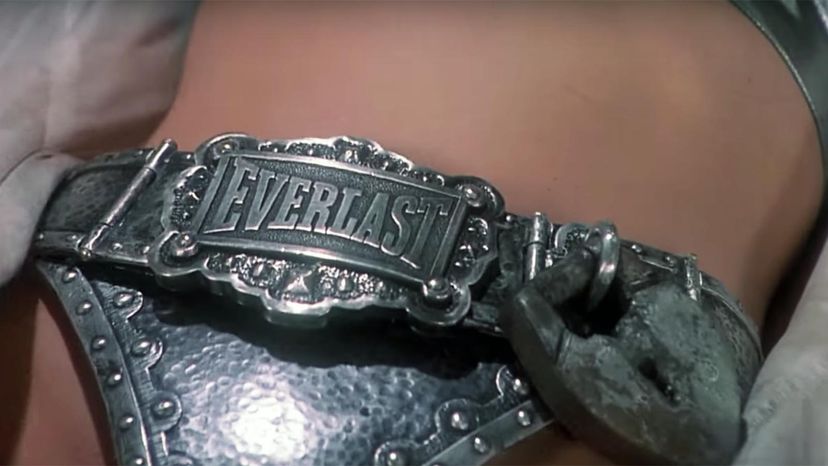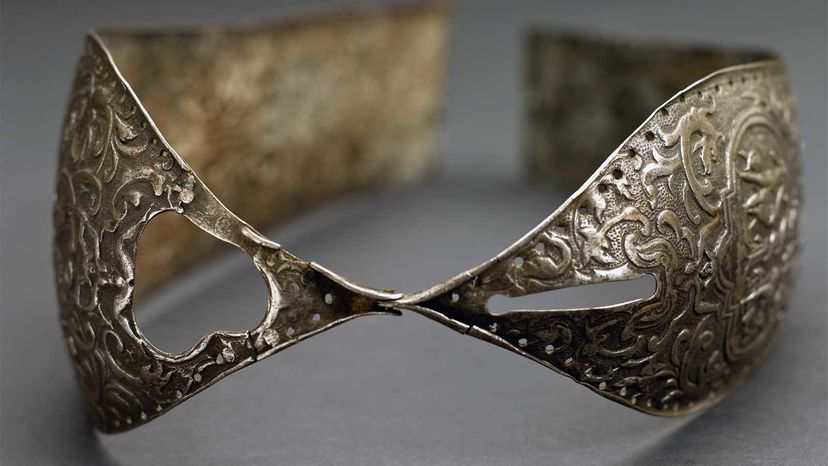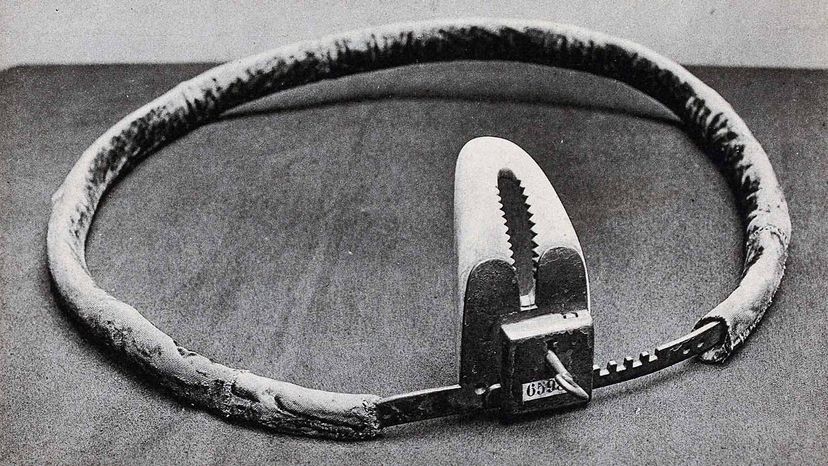
Key Takeaways
- Chastity belts were likely a myth, not a historical reality in the Middle Ages.
- The concept of chastity belts was likely a satirical invention by male writers and artists.
- The modern idea of chastity belts was likely a 19th-century creation for museum displays.
There's a scene in Mel Brooks' 1993 comedy "Robin Hood: Men in Tights" in which the villainous Sheriff of Rottingham kidnaps Maid Marian, our hero's love interest, and spirits her away to a tall castle tower. His nefarious intentions are clear. His plan, however, is thwarted when he encounters the ultimate defense: her "iron underwear," a padlocked Everlast chastity belt (see above).
It's a silly take on a cornerstone of medieval lore. But it might not be too far from the device's actual history. The chastity belt is a lot of things: provocative, misogynistic and deeply absurd. It is also, almost certainly, a myth.
Advertisem*nt
Chastity belts were supposedly used by men in the Middle Ages to protect their wives' virtue while they were away on business trips. These metal bikini bottoms could be locked around a woman's hips; they featured two openings for latrine purposes, which were occasionally patterned after hearts or flowers. As scholars have pointed out, the entire getup would have been both inhumane and very unsanitary.
But were they real?

Advertisem*nt
Contents
- An Ironclad Jest
- Forging the Evidence
- A Tall Tale As Old As Time
An Ironclad Jest
Probably not. It's a "typical male sexual inferiority complex, translated into a joke," says Albrecht Classen, a medieval scholar and professor at the University of Arizona. Classen would know; he literally wrote the book on this subject. "The Medieval Chastity Belt: A Myth-Making Process" details the device's history — notably, its lack of historical evidence. "Male poets wrote about it, male artists presented the evidence," he says, "but there is no hardcore fact."
The earliest recorded mention of a chastity belt comes from Konrad Kyeser von Eichstadt, a German engineer known for designing siege technology. In the early 15th century, von Eichstadt wrote about the device in a manuscript titled "Bellifortis," (which means Strong In War) that is mainly a catalog of military gadgets.
Advertisem*nt
However, Classen points out, there is strong evidence that von Eichstadt conceived of the contraption in jest. Von Eichstadt seems to have relished a good joke; "Bellifortis" is bursting with other tongue-in-cheek inventions, including a cat-shaped chariot and a fart-powered propulsion device.
By the late Middle Ages, chastity belts had become a popular subject for satirists. One German print from the late 16th century illustrates an older lord bidding farewell to his beautiful young wife, depicted in the nude save for a padlocked metal belt. Unbeknownst to her husband, her lover is hiding just behind a canopied bed curtain, clutching a chastity-belt shaped key. The punchline? The lord's hat has sprouted a conspicuous pair of donkey ears.

Advertisem*nt
Forging the Evidence
The chastity belt as we know it was most likely a 19th-century invention. "It seems to have been a part of the whole Gothic revival," says Lisa Bitel, a professor of history, gender and religion at the University of Southern California.
As industrialization swept across Europe, materials like iron and steel became more widely available. The majority of these metals were used to craft things like railroads and bridges. But some smiths found a slightly bawdier use for their skills.
Advertisem*nt
"There was a certain branch of English manufacturers," Classen says, "who realized that there was a huge market on the continent and elsewhere for chastity belts." That market was museums and curiosity shows. The tight-laced Victorian crowd was willing to pay top dollar for a glimpse of any salacious Dark Age torture device, which were lovingly (and extravagantly) crafted to fit their notions of medieval barbarism. Thus, the chastity belt was forged.
While phony belts have since been removed from many museum displays, there are still a few collected in places like the British Museum in London. But they are now exhibited with caveats. For example, the British Museum's display reads:
"There is evidence for the existence of chastity belts from the beginning of the fifteenth century onwards...The evidence for their use in the Renaissance period, however, is largely anecdotal or in burlesque fiction."

Advertisem*nt
A Tall Tale As Old As Time
Ultimately, it's probably best to think of the chastity belt as a medieval urban legend, not unlike present-day tales of poisoned Halloween candy or hook-handed serial killers. It has stuck in the public consciousness thanks to a combination of outrage and sex appeal. And, like many modern urban legend fans, people in the Middle Ages were likely in on the joke.
"They had different logics and different ideas about how nature worked," Bitel says, "but they were quite sensible about distinguishing between stupid stuff."
Advertisem*nt
So then, if the chastity belt is a myth, what was life the Middle Ages actually like?
"It's a nice place to visit, but you wouldn't want to live there," says Jennifer Wollock, a professor of medieval studies at Texas A&M University. As Wollock points out, there was no modern medicine, no electricity, very little indoor plumbing. But medieval society was not a completely backward, misogynistic culture full of maidens trapped in windowless towers, either.
"There were lots and lots of cool female writers in the Middle Ages," Wollock says, "and not just 'Anonymous'." Just look at writers like poet Marie de France and Christina Pisan, a proto-feminist and contemporary of Chaucer's. "It was nothing to sniff at."
Now That's Interesting
A male chastity belt, designed to inhibit masturbation, was patented in 1870 by Daniel P. Cook of Hartford, Connecticut.
Advertisem*nt
Frequently Asked Questions
How did chastity belts become popularized in modern times?
Chastity belts gained popularity during the Victorian era due to Gothic revival and curiosity about medieval artifacts.
What misconceptions about the Middle Ages do chastity belts reflect?
They reflect the myth of widespread medieval misogyny and lack of personal freedom for women, which is largely exaggerated.